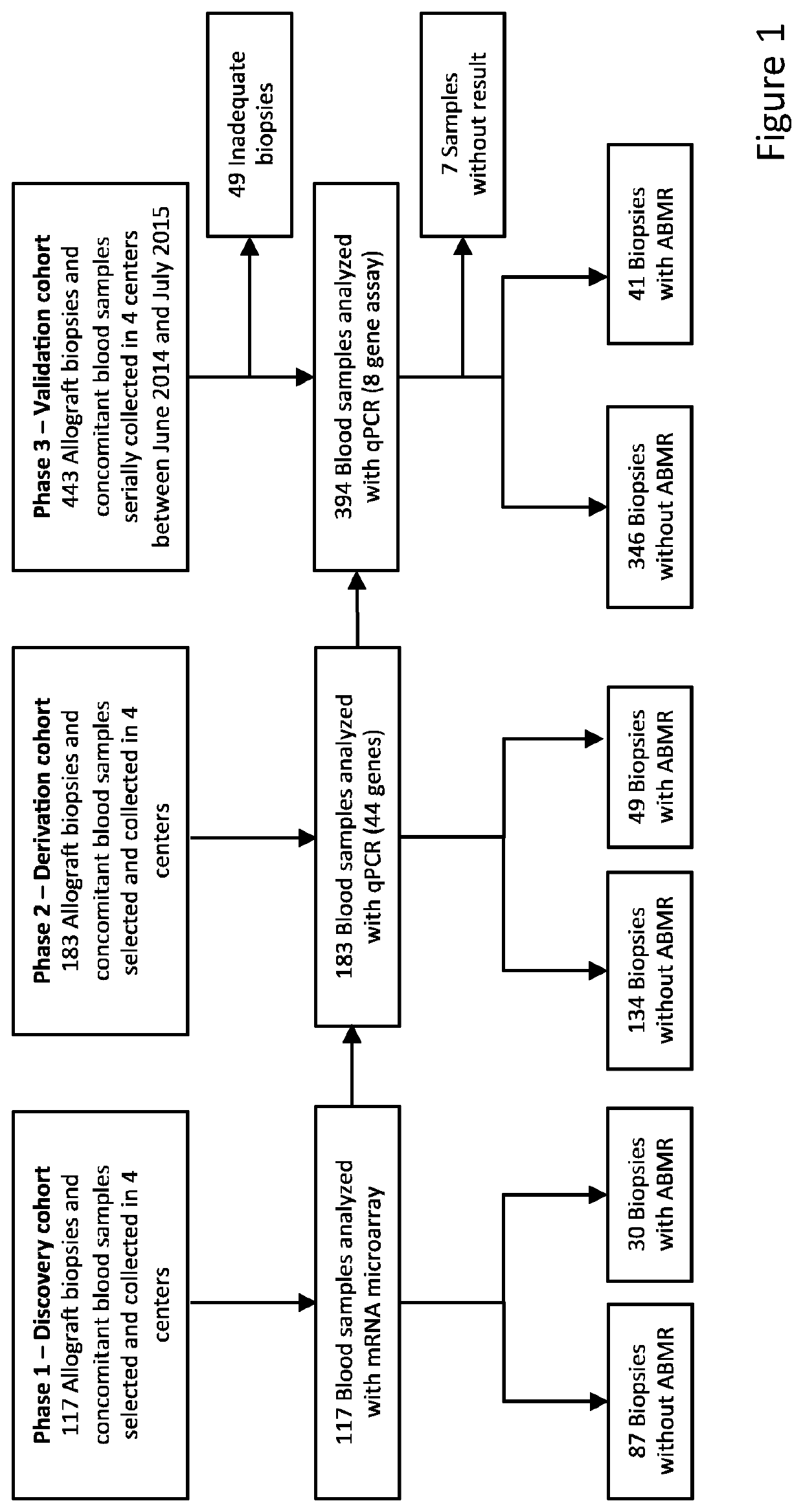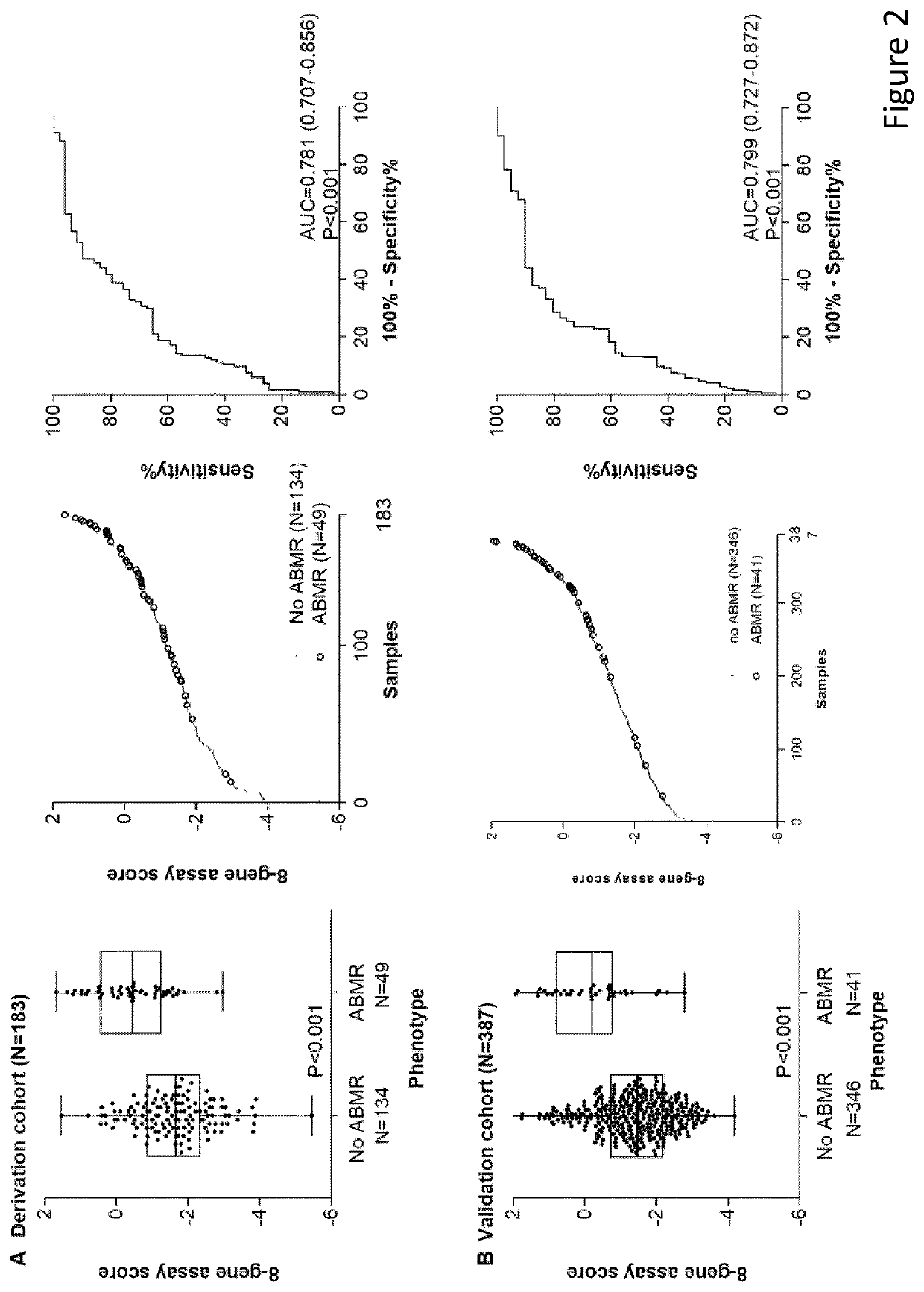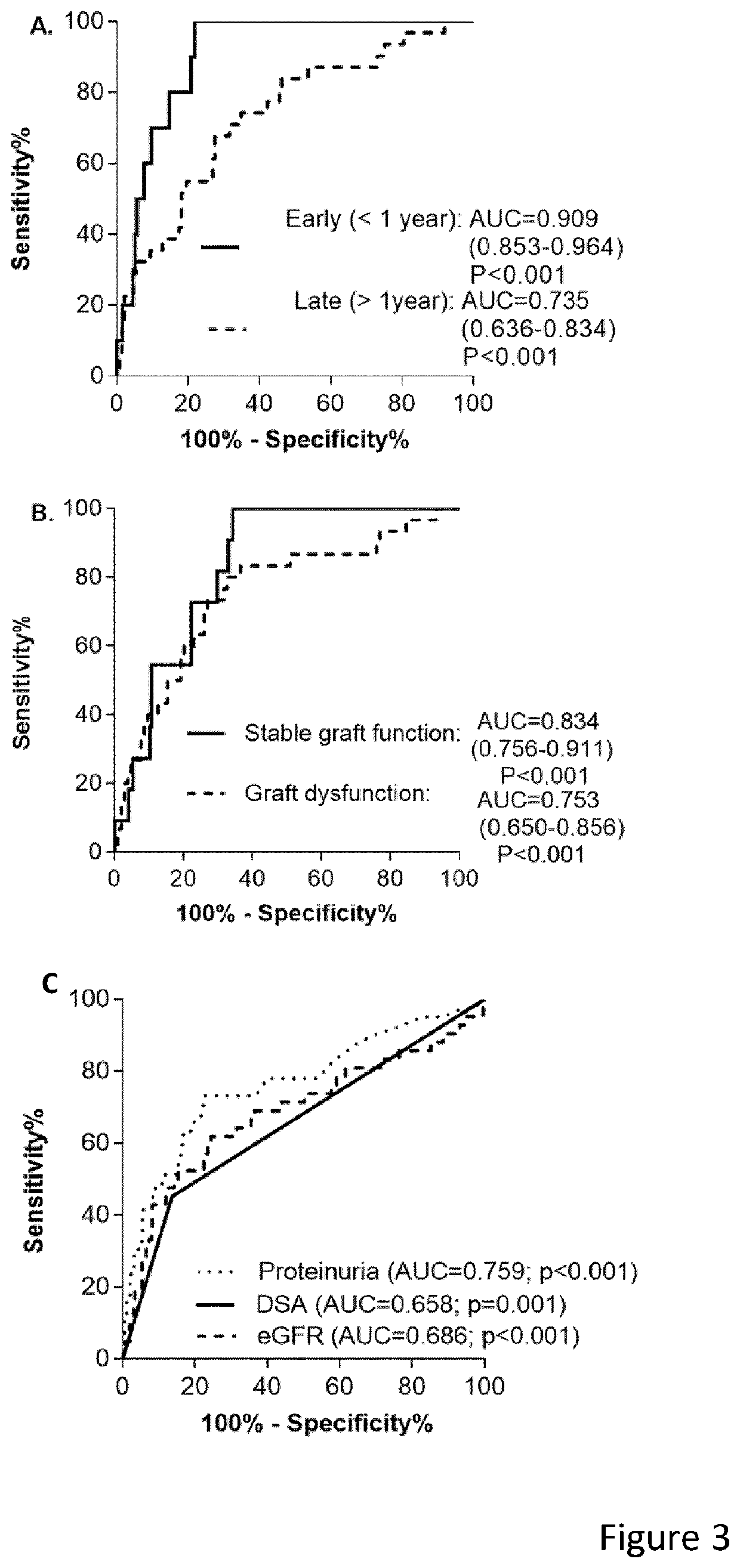mRNA-BASED BIOMARKERS FOR ANTIBODY-MEDIATED TRANSPLANT REJECTION
a biomarker and antibody-mediated technology, applied in the field of mrna-based biomarkers for antibody-mediated transplant rejection, can solve the problems of increasing the risk of graft failure, antibody-mediated rejection also associates, etc., and achieves the effect of increasing diagnostic accuracy and maintaining accuracy for antibody-mediated rejection
- Summary
- Abstract
- Description
- Claims
- Application Information
AI Technical Summary
Benefits of technology
Problems solved by technology
Method used
Image
Examples
example 1
Study Design, Patient Population and Sample Collection
[0073]In a multicentre study, 687 peripheral blood samples obtained at the time of a renal allograft biopsy were evaluated, 120 with antibody-mediated rejection and 567 without (FIG. 1). Protocol renal allograft biopsies were performed at 3, 12, and sometimes at 24 months after transplantation, according to local centre practice, in addition to clinically indicated biopsies (biopsies at time of graft dysfunction). All adult patients who had received a single kidney transplant at these institutions and who provided written informed consent, were eligible. Recipients of combined transplantations were excluded. All transplantations were performed with negative complement-dependent cytotoxicity cross-matches. Institutional review boards and national regulatory agencies (when required) approved the study protocol at each clinical centre.
Baseline Characteristics Patients' demographics and clinical characteristics of the three independe...
example 2
Primary and Secondary End Points
[0077]The primary end point was the diagnostic accuracy of a multigene marker for antibody-mediated rejection in the validation cohort. Secondary endpoints were the diagnostic accuracy in specific clinical situations (at time of graft dysfunction versus at time of stable graft function, early versus later after transplantation), comparison with traditional markers used in kidney transplantation (proteinuria and estimated glomerular filtration rate) and net benefit for clinical decision-making.
example 3
Sample Collection and Biopsy Scoring
[0078]Peripheral blood samples were collected at time of the renal allograft biopsies, directly in PAXgene Blood RNA Tubes® (Qiagen Benelux BV, Venlo, The Netherlands). Two needle cores were taken at each kidney allograft biopsy. One was used for histology, at least half of the other one was immediately stored in Allprotect Tissue Reagent® (Qiagen Benelux BV, Venlo, The Netherlands) for RNA expression analysis (in the discovery set). All biopsies included in this study were reviewed and graded in a blinded fashion by a central pathologist independent from the original center. All biopsies were rescored semiquantitatively according to the updated Banff 2017 classification [Haas et al. (2018) Am J Transplant 18, 293-307].
[0079]In the discovery cohort, RNA extracted from blood and biopsies was hybridized onto Affymetrix GeneChip Human Genome U133 Plus 2.0 Arrays (Affymetrix Inc., High Wycombe HP10 0HH, UK). In the derivation and validation cohorts, R...
PUM
| Property | Measurement | Unit |
|---|---|---|
| Weight | aaaaa | aaaaa |
| Level | aaaaa | aaaaa |
Abstract
Description
Claims
Application Information
 Login to view more
Login to view more - R&D Engineer
- R&D Manager
- IP Professional
- Industry Leading Data Capabilities
- Powerful AI technology
- Patent DNA Extraction
Browse by: Latest US Patents, China's latest patents, Technical Efficacy Thesaurus, Application Domain, Technology Topic.
© 2024 PatSnap. All rights reserved.Legal|Privacy policy|Modern Slavery Act Transparency Statement|Sitemap



